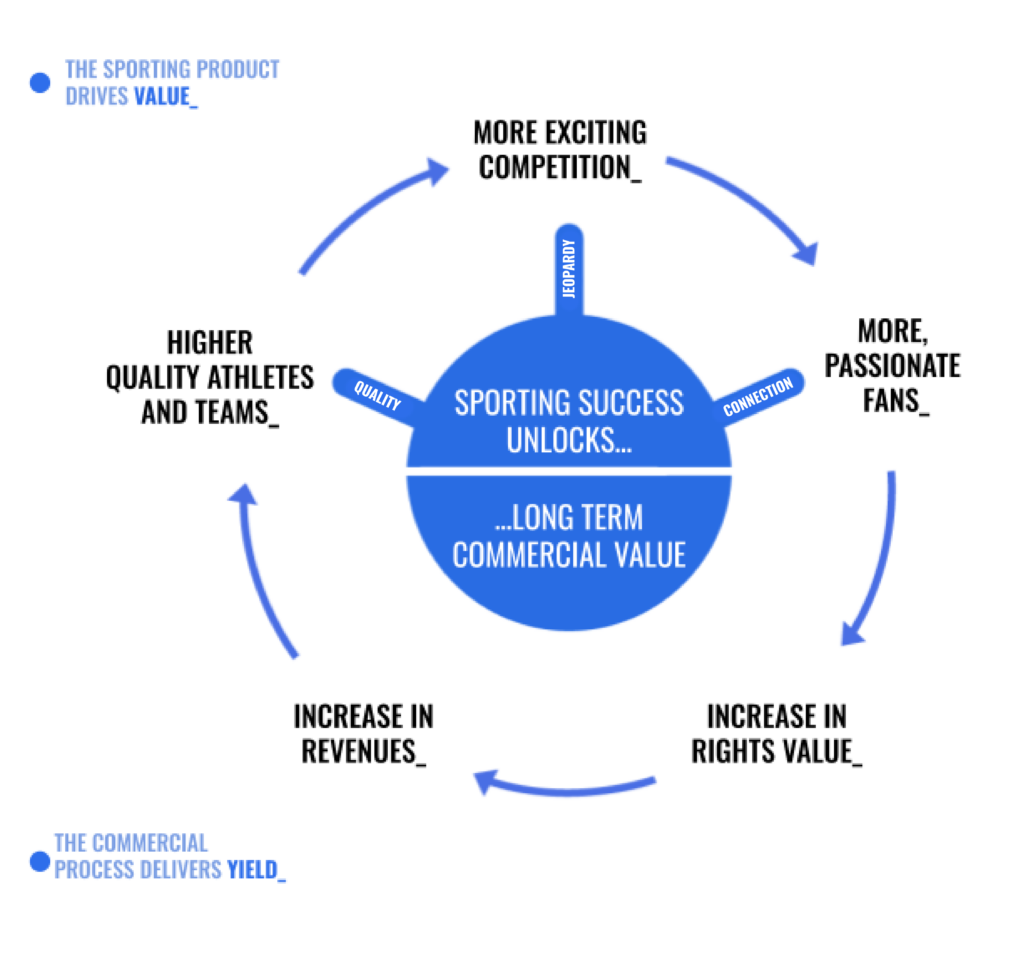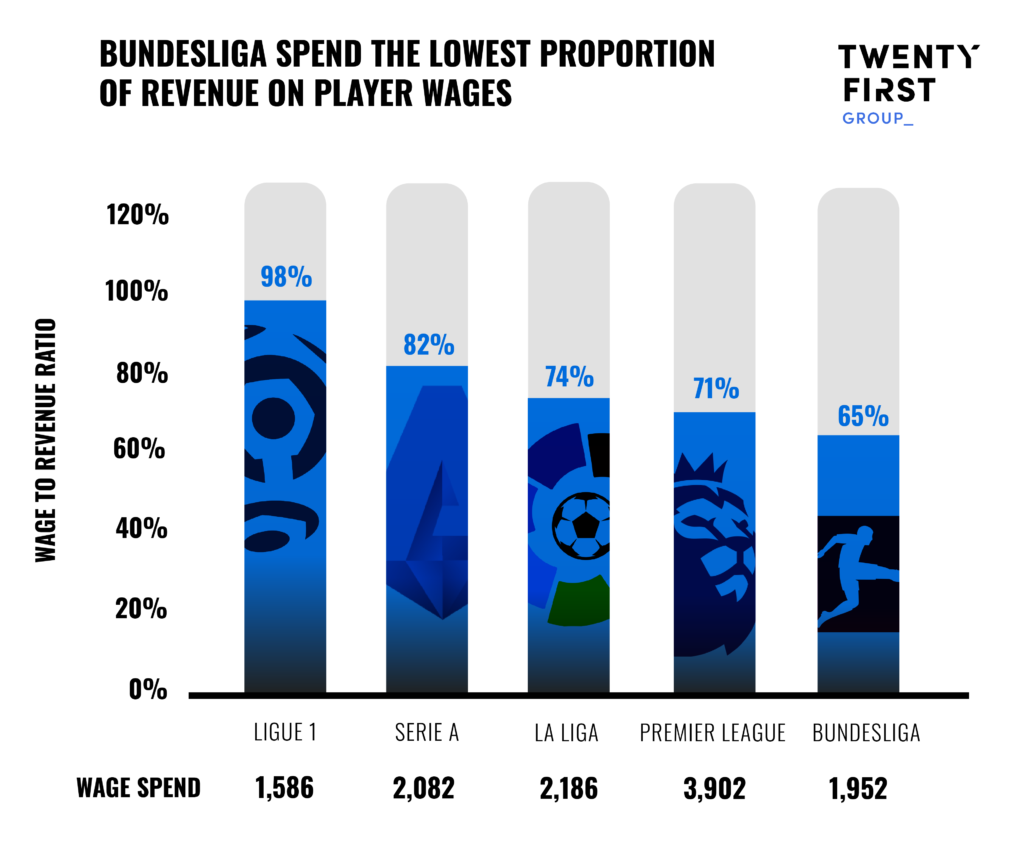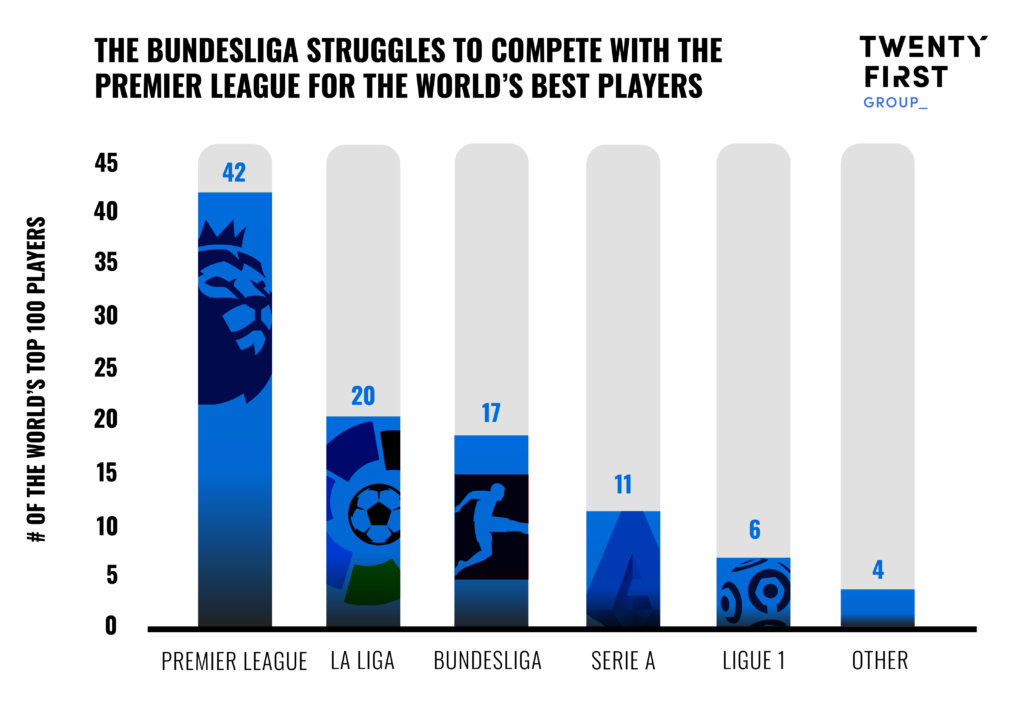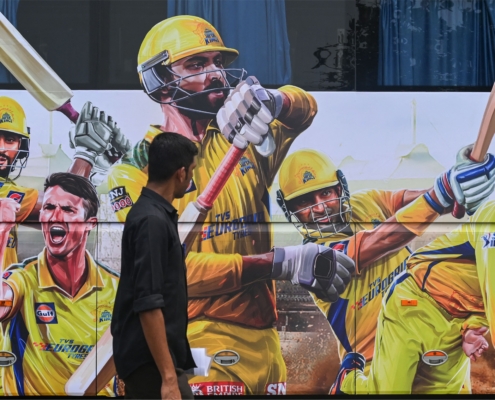Thought Leadership
Securing Superstars: Creating Competition Value
8 MIN READ
Thought Leadership
Inspired by what you’re reading? Why not subscribe for regular insights delivered straight to your inbox.
All sports are locked in a battle for superstars. Younger fans – whose attention is critical for future growth and is therefore coveted by most commercially-minded sports properties – are increasingly attracted to the brands of superstar athletes over the teams for which they play, or the competitions in which they compete. The commercial growth of a sport is now largely determined by its ability to attract the biggest stars.
In a zero-sum revenue industry, access to the sport’s superstars is key. The most popular athletes also tend to be the best, meaning that they elevate both the quality of any competition through their performance, and the level of connection fans have with the sport through their profile.
This is the founding principle of LIV Golf’s tilt at the PGA Tour – buy the involvement of the biggest players and seize a significant share of the global media and sponsorship spend allocated to golf. Their deep pockets and the belief that players were not being remunerated in line with their commercial worth gave them confidence in being able to win the battle. Recognising the danger, the PGA Tour have responded in kind through increased prize money and expanding the Player Impact Programme – the proportion of revenue distributed to players in 2022 has increased to 55% which is broadly in line with many other sports. PGA Tour’s swift response in incentivising their biggest stars to stay along with LIV’s conspicuous failure to secure golf’s two biggest names – Tiger Woods and Rory McIlroy – mean the PGA Tour may have done enough to prevail, but the episode demonstrates the importance of superstars to the commercial clout of any elite sports property.
The IPL’s stellar growth is another example of the impact of securing the participation of the world’s best players each year, with the auction adding further sizzle to the superstar status of players like Jos Buttler and Glen Maxwell. The latest media rights deal makes the IPL second only to the NFL for revenue generated on a per match basis. The IPL’s growth sits in stark contrast to Australia’s Big Bash League, which despite early success is now facing declining audiences. Increased competition from other franchise leagues and the expansion of the competition have undoubtedly contributed to this, but one often overlooked factor is the participation of the world’s best players – the number of superstar players featuring in the competition has fallen significantly since the league’s inception in 2011.
In some ways, this is nothing new – most sports have always recognised the importance of superstars. For example, MLS’s ‘Designated Player’ rule which enables teams to pay players outside of the salary cap was created to enable David Beckham’s move to LA Galaxy back in 2007. But the attention economy – where all forms of entertainment compete for the attention of Generations Z and Alpha – is exacerbating the trend. As a result, sports properties are now seeking to find ways to attract the best athletes to their competitions, for which capital is generally required. While LIV Golf is leveraging the Public Investment Fund of Saudi Arabia, many sports properties are turning to Private Equity to raise the capital necessary to secure the services of the best. CVC Capital Partners alone have invested in Rugby, Football, Cricket, Motorsports, and Volleyball.
Football’s Bundesliga is the most recent ‘Big Five’ European league considering raising capital through private equity in an attempt to grow overseas audiences. Plans are reported to include opening new offices overseas, tours and the creation of a direct-to-consumer streaming platform. While these all have merit they are no more important than ensuring the league is home to football’s biggest superstars. Currently, Bundesliga clubs pay out less of their revenue to players than any of the other big 5 leagues, limiting their buying power. This, along with adding jeopardy to the competition (Bayern Munich have been champions since 2012) – will be the biggest draw for young and international fans alike.
While capital can be decisive, it isn’t always a question of buying power. Superstars can be created. Formula 1’s Drive to Survive is perhaps the finest example of shining a light on the protagonists in a way that builds connection between their sport and new fans. Sports properties who lack the global appeal to benefit from oven-ready superstar athletes – such as SailGP or Volleyball – are increasingly looking at ways in which their own superstars can be created to drive growth.
While it is right to focus on issues such as changing consumer habits, the growth of digital and Web3, sports properties mustn’t forget that commercial success remains determined by what happens on the pitch. And what happens on the pitch is most compelling when it involves the biggest and the best.
If you would like to find out more about our competition intelligence and fan connection services please get in touch with Ben Marlow.










